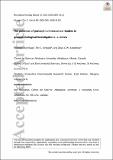Files in this item
The potential of portable luminescence readers in geomorphological investigations : a review
Item metadata
| dc.contributor.author | Munyikwa, Kennedy | |
| dc.contributor.author | Kinnaird, Tim C. | |
| dc.contributor.author | Sanderson, David C.W. | |
| dc.date.accessioned | 2021-09-01T23:38:11Z | |
| dc.date.available | 2021-09-01T23:38:11Z | |
| dc.date.issued | 2020-09-02 | |
| dc.identifier | 269843771 | |
| dc.identifier | cc98c35b-37e9-4879-a598-a0ac07ffd43e | |
| dc.identifier | 85090059047 | |
| dc.identifier | 000564590200001 | |
| dc.identifier.citation | Munyikwa , K , Kinnaird , T C & Sanderson , D C W 2020 , ' The potential of portable luminescence readers in geomorphological investigations : a review ' , Earth Surface Processes and Landforms , vol. Early View . https://doi.org/10.1002/esp.4975 | en |
| dc.identifier.issn | 0197-9337 | |
| dc.identifier.other | RIS: urn:F41C7C67D0A7557AA40188FB0B667B5D | |
| dc.identifier.uri | https://hdl.handle.net/10023/23882 | |
| dc.description.abstract | The development of functional portable optically stimulated luminescence (OSL) readers over the last decade has provided practitioners with the capability to acquire luminescence signals from geological materials relatively rapidly, which allows for expedient preliminary chronostratigraphic insight when working with complex depositional systems of late Quaternary age. Typically, when using the portable OSL reader, infrared (IR) or blue post-IR OSL signals are acquired from bulk unprocessed materials, in contrast to regular luminescence dating which is usually based on measurements on pure quartz or feldspar mineral separates, or on select silt-sized polymineralic portions. To demonstrate the utility of portable OSL measurements, this paper outlines the basic features of portable OSL readers and their constraints. Afterwards, case studies in which the instrument has been used to elucidate cryptostratigraphic variations in sedimentary sequences for geomorphological applications are reviewed. The studies can generally be grouped into three main categories. The first includes studies where the variation of portable OSL reader luminescence signal intensities with depth are plotted to generate profiles that contextualise sediment stratigraphy. In the second group, portable OSL reader luminescence signal intensities are used to interpret sediment processes that shed light on depositional histories. In the last category, luminescence signals from the portable OSL reader are calibrated to approximate numerical burial ages of depositional units. The paper concludes with a discussion of possible future directions. | |
| dc.format.extent | 3168807 | |
| dc.language.iso | eng | |
| dc.relation.ispartof | Earth Surface Processes and Landforms | en |
| dc.subject | Geomorphology | en |
| dc.subject | Dating | en |
| dc.subject | Landscape evolution | en |
| dc.subject | Optically stimulated luminescence | en |
| dc.subject | Portable OSL reader | en |
| dc.subject | Chronology | en |
| dc.subject | GE Environmental Sciences | en |
| dc.subject | T-NDAS | en |
| dc.subject.lcc | GE | en |
| dc.title | The potential of portable luminescence readers in geomorphological investigations : a review | en |
| dc.type | Journal article | en |
| dc.contributor.institution | University of St Andrews. School of Earth & Environmental Sciences | en |
| dc.identifier.doi | https://doi.org/10.1002/esp.4975 | |
| dc.description.status | Peer reviewed | en |
| dc.date.embargoedUntil | 2021-09-02 |
This item appears in the following Collection(s)
Items in the St Andrews Research Repository are protected by copyright, with all rights reserved, unless otherwise indicated.

